From BBL's to Ozempic
Exploring the relationship between gender and women's bodies
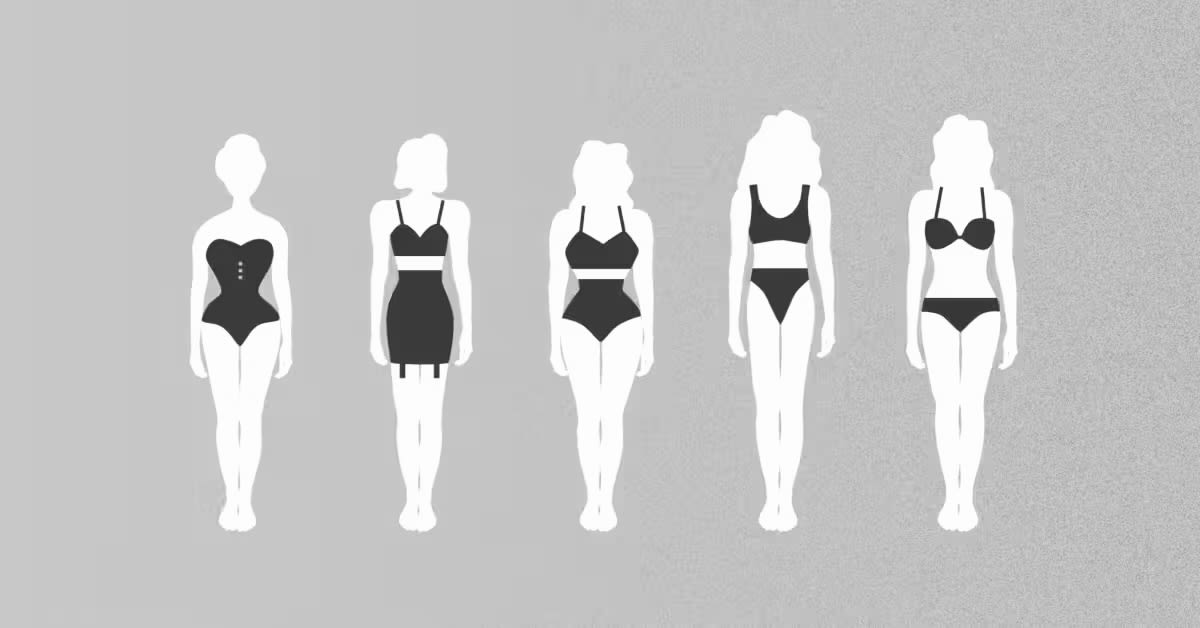

INTRODUCTION
Throughout history, women's body standards have undergone constant evolution, mirroring changes in societal norms and expectations. In the 19th century, larger figures were embraced and sculpted with corsets, while the early 20th century saw the emergence of plastic surgery as a means to conform to beauty ideals. Today, the popularity of weight loss drug 'Ozempic' reflects a shift in body standards. Class has historically played a significant role in shaping ideal beauty standards, with the pursuit of these standards often signalling wealth and social status.
Delving into gender theory allows us to understand how these idealised body images are upheld and perpetuated. A case study on Kylie Jenner exemplifies the shifting nature of body standards in relation to one individual and the close link between class and beauty ideals. The portrayal of these standards in media, including films and TV shows, also has a profound impact on societal perceptions of beauty.
One of the most notable consequences of these strict body standards is their detrimental effects on mental health. By exploring these impacts, we gain insight into the real and pervasive influence these standards have on society as a whole. Understanding the history and implications of women's body standards is vital for addressing the broader societal implications and promoting healthier attitudes towards body image.
TIMELINE: THE EVOLUTION OF WOMEN BODY STANDARDS
Queen Victoria's body become the beauty standard in the late 1800's to early 1900's. She was known for her petite stature yet fuller figure, during this time having a larger figure was a sign of good wealth and fortune making this body image desirable.
Marilyn Monroe become a evident placeholder in Hollywood from the 1950s. From this her body became particularly iconic, her small waist, hourglass figure and voluptuous curves. This was one of the first large shifts in body images going from fuller figures to small and petite body standards.
Kate Moss became an icon in the late 1990's and early 2000's. Her slim frame and minimal curves body became the new body standard. This beauty image was also associated a lot with drugs, furthermore Kate given the nickname of 'cocaine Kate' signally the large impact that drugs had on her figure.
Kim Kardashian body became a well known figure, throughout 2010 and 2020 her hourglass figure and large and voluptuous feautures challenged the past recent conventional of skinny, small with little curves this is a dramatic change in body images.
Finally, Alix Earle becoming extremely popular on social media in recent years her body has become a signal of newer beauty standards. Her small figure still holds soft curves, although moving away from the past beauty image of large curves. This can be noted as the beauty standard today.
Gender theory and its relationship to the evolution of women's bodies.
Gender theory is a multi-disciplinary academic field that examines how gender identities, roles, and relations are socially constructed. Key concepts include gender performativity, patriarchy, intersectionality, and queer theory. Scholars such as Judith Butler and Simone de Beauvoir have contributed foundational texts to the field. Resources like "Gender Trouble" by Judith Butler and "The Second Sex" by Simone de Beauvoir offer insights into the social construction of gender and the oppression of women. "This Bridge Called My Back" and "Feminist Theory: From Margin to Center" highlight the importance of including marginalised voices within feminist discourse. Overall, these scholarly resources provide critical perspectives on gender identity, power dynamics, and social justice in society.
The history of the 'ideal' woman's body and its evolution over time reflects complex societal influences and gender norms, as explored in Jacqueline Howard's article for CNN1. Throughout history, the concept of the 'ideal' female body has evolved. This shifting ideal has been perpetuated by societal pressures and constructs, influencing women's perceptions of their bodies and self-worth.
Gender theory can provide insights into how these societal expectations and beauty standards impact women's experiences and perceptions of their bodies. The pressures to conform to certain body types, such as the emphasis on a thin or curvaceous figure in different eras, highlight how gender norms shape beauty ideals and influence women's self-image2. The historical trends in body preferences, from voluptuous figures to slender frames, reflect broader shifts in cultural attitudes towards femininity and beauty.
Furthermore, the article highlights the damaging impacts of striving to conform to changing beauty standards on women's well-being, including the prevalence of eating disorders throughout history and the psychological effects of body image issues. By examining the historical trajectory of the "ideal" female body through a gender lens, we can better understand the societal forces at play in shaping women's perceptions of beauty and body image, as well as the ongoing efforts to promote body positivity and diversity in media and fashion.

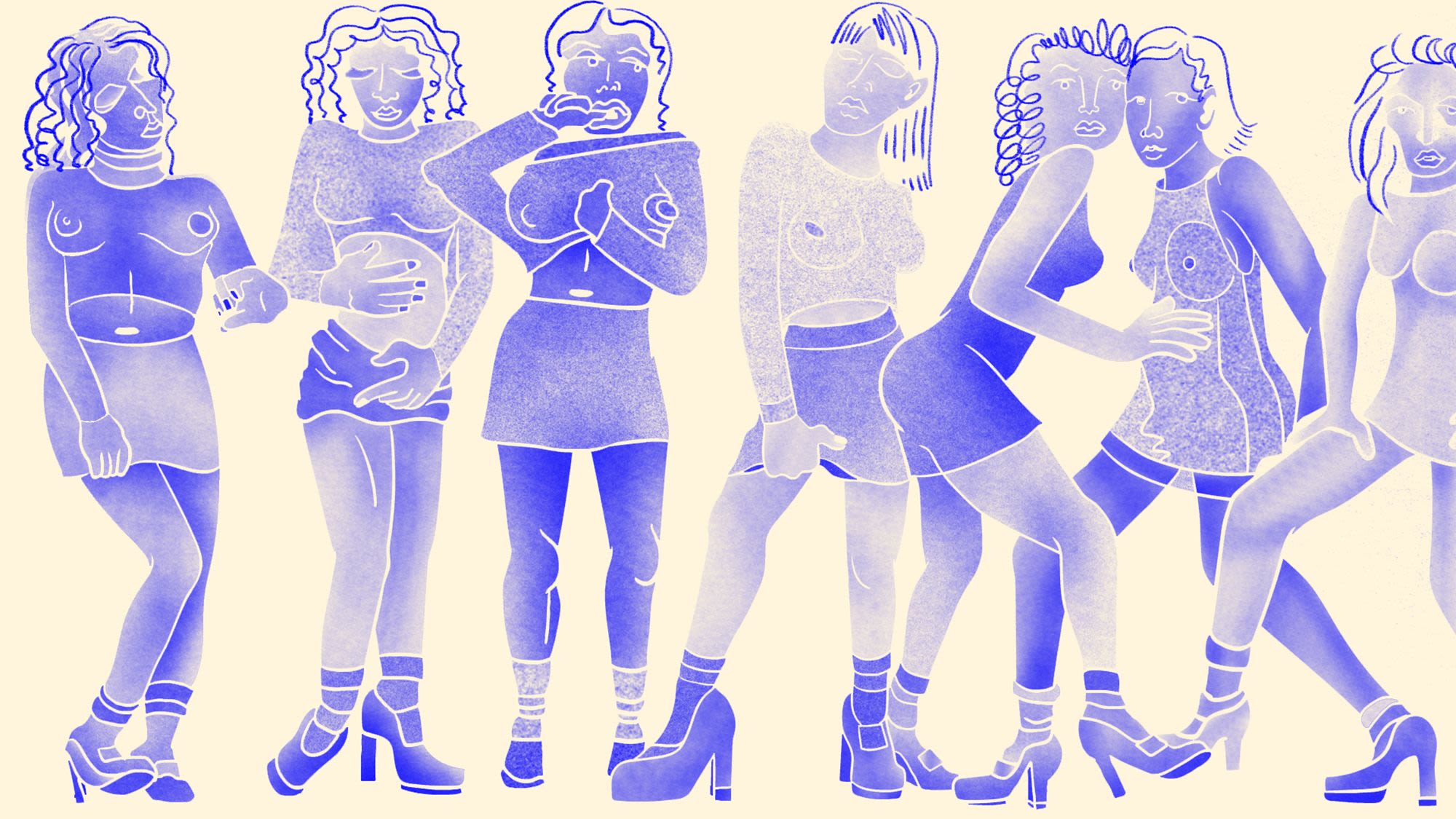
BBL's
Brazilian Butt Lifts, more commonly known as BBLs is a well-known surgery, especially among celebrities that have a large impact on body image and standards.
Undergoing the procedure means transferring fats from other areas of the body such as the thighs, stomach or hips to the butt3. Overall the surgery creates a much larger buttocks creating the hourglass illusion for one's figure. This surgery in New Zealand will cost between $16,000 and $22,0004. With the large cost factor of the surgery, it is very limited to who gets this done.
The surgery did have a period from around 2010 when it became popular. This is an indication of class due to its premium costs. The Kardashians, Kim, Khloe and Kylie throughout this period were almost ambassadors for this surgery and achieving this body image. Some other celebrities that have been known for possibly getting this surgery include Iggy Azalea, Cardi B and Nicki Minaj5.
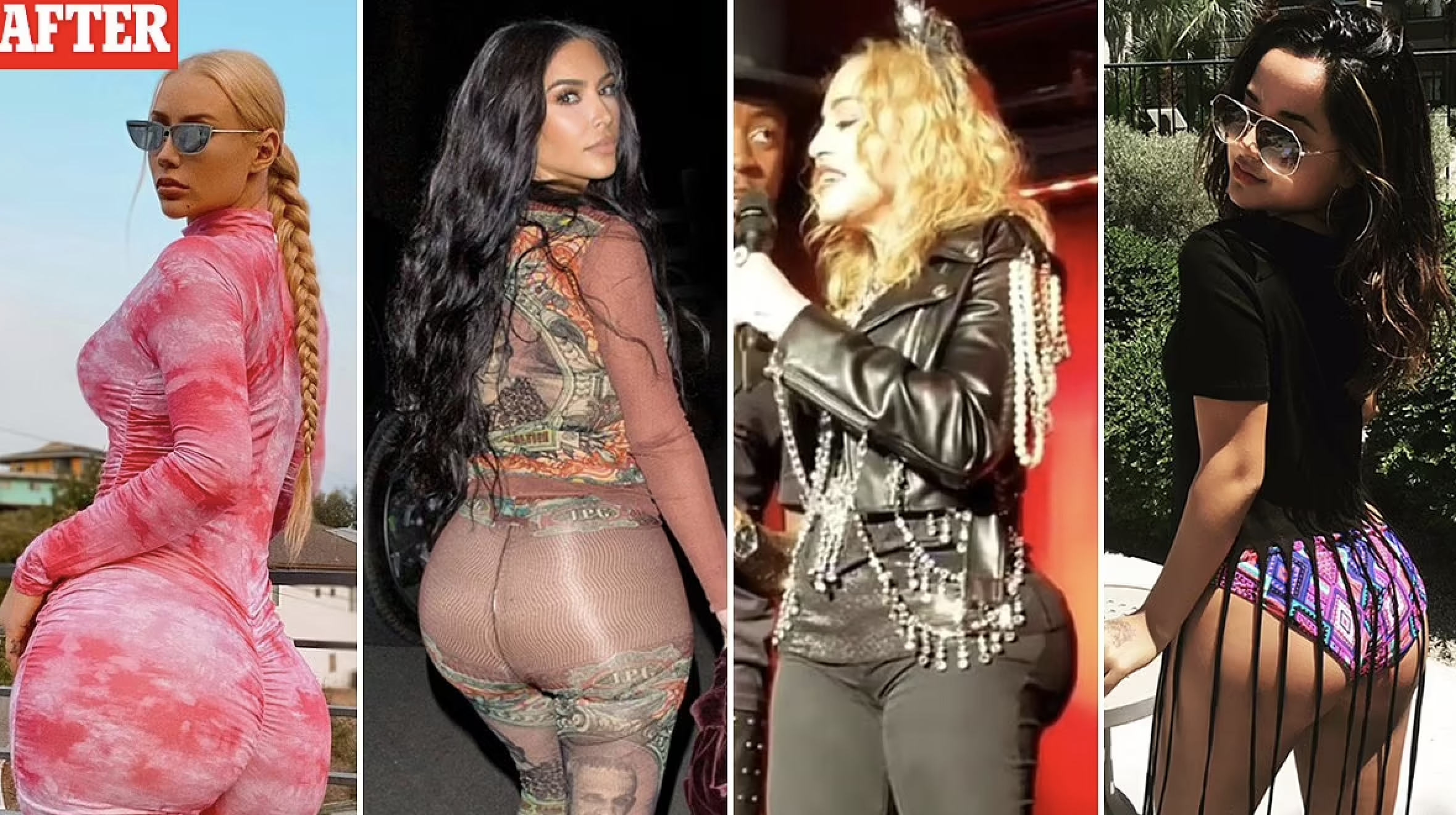
Ozempic
Ozempic is a drug that was introduced in 2023 and is most commonly used to treat type 2 diabetes. However, as the drug has been used within the diabetic community it has been found that one of the more dominant side effects is weight loss. This is now seen as a quick way to lose weight among celebrities. The cost of Ozempic if you do not have diabetes is approximately $500NZD, while if you do have diabetes it is possible to get it a little bit cheaper through medical insurance, however, it is not fully funded in New Zealand 6.
.

Class and Society
Class and society have a major impact on the use of Ozempic and the rise of BBLs within the high-class society in the mid-2000s (Nicki Minaj). Society has impacted the way we view weight loss drugs and surgery. Originally, surgery was viewed as a positive way to change someone's body while as society has changed and evolved it is now viewed as a negative thing and even the celebrities have gone and done now say they have regretted it. As more people have undergone this surgery there have been negative side effects found, same with the drug Ozempic.
Societal class has a large impact on why certain body standards appear. With the large costs of BBL and Ozempic, the ability to have these procedures showcases their wealth. This therefore creates the connection that if you have this procedure you are of higher class.
Queen Victoria
Queen Victoria is an example of what upper-class women's ideal body type was from the mid-late 1800s. It was seen that if you had a bigger figure you were wealthy and very upper-class, while today it is the opposite.
To be able to afford food was extremely uncommon as food was extremely scarce meaning it was seen as a gift to have a bigger body. This is why people in the 1800s were envious of Queen Victoria's body as they wanted to be able to eat as much as she could but simply could not afford to.
We as a society have always been obsessed with what our size is, especially in women. Queen Victoria is a good example of the ideal body type in the 1800s. She had a bigger structure with an hourglass shape that made her look desirable and ultimately since she was a big influence at the time, she was seen as having the ideal body type. This body type was known as the Venus Figurines7 which was the most desirable during the mid-1800s to early 1900s.
Queen Victoria's body is the most interesting as her hourglass shape was not achieved through harmful operations and drugs, but is instead all-natural.
Victoria Beckham
Victoria Beckham has always been known for being a fashion icon, being Posh Spice in the all-girls group Spice Girls and being married to the football star David Beckham.
Victoria Beckham has always been known for being a fashion icon and being unnaturally thin. While there has not been any confirmation Beckham has used Ozempic, it was revealed in 2001 that she was suffering from an Eating Disorder 8. We can see that her desirable petite figure, which women all around the world dreamed of having, was not natural and extremely unhealthy. Beckham's manager has very clearly promoted unhealthy body types and unhealthy eating as he was the one who encouraged this impossible body type. This example of Victoria Beckham clearly shows us the idea of gender theory due to the way she was treated during her music career.
Nicki Minaj
When it comes to BBLs and Ozempic, unlike Beckham and Queen Victoria, Nicki Minaj has had previous history with these procedures. Minaj has admitted to having a BBL (Brazilian Butt lift) as well as many other plastic surgeries. In the 2010s people wanting Minaj's body figure was at an all-time high as this is when she gained the most popularity through her music, which meant she had many women idolising her even if it was for the completely wrong reasons.
However, when women like Nicki Minaj get plastic surgery to make them look/feel better about themselves, often they regret it or get another surgery to remove implants. Minaj did an interview outlining her regrets and how women who do drugs or surgery have an extremely high chance they will regret it like she does 9. This shows us that just because you can afford to get surgery just to change your appearance doesn't mean that you should.
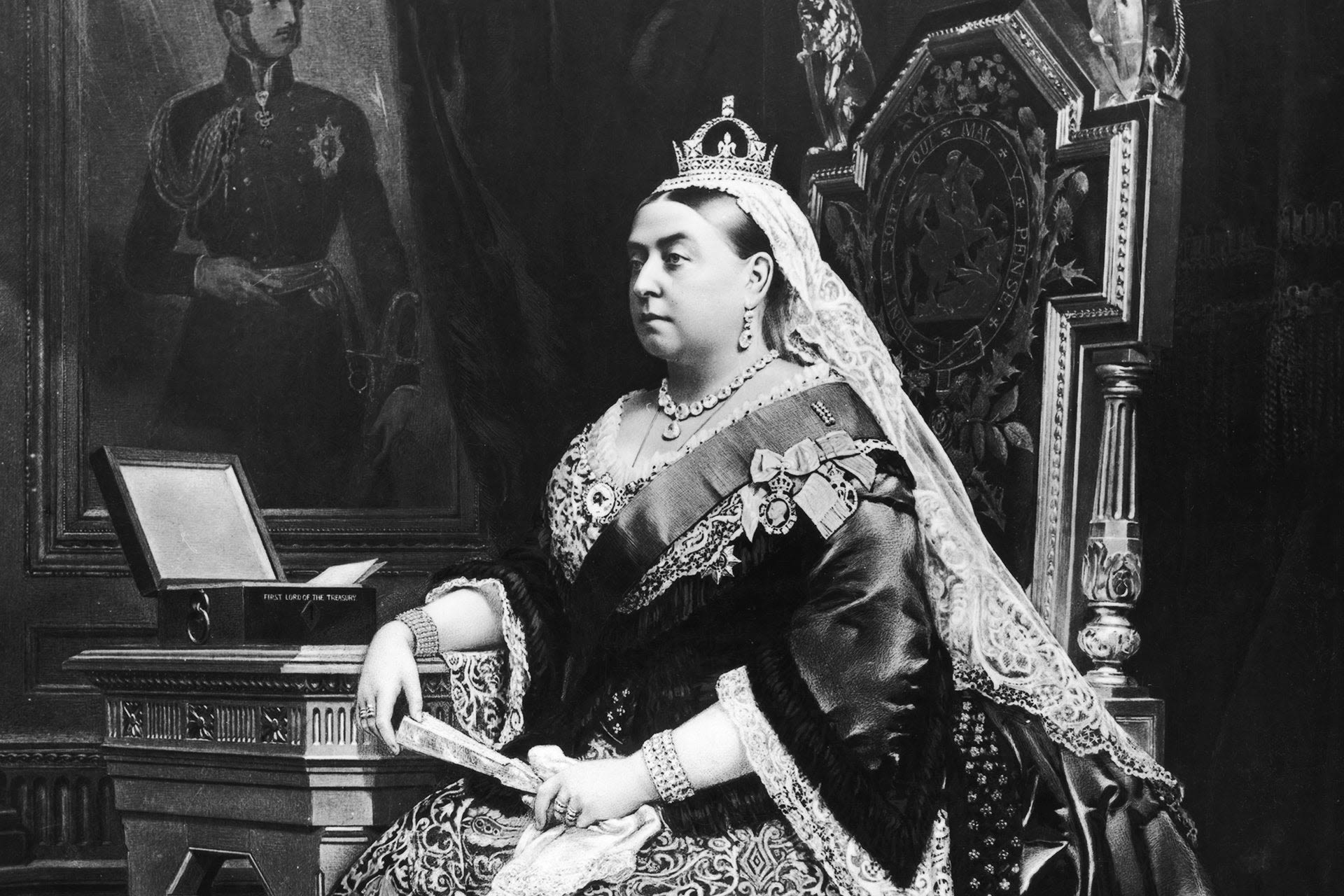
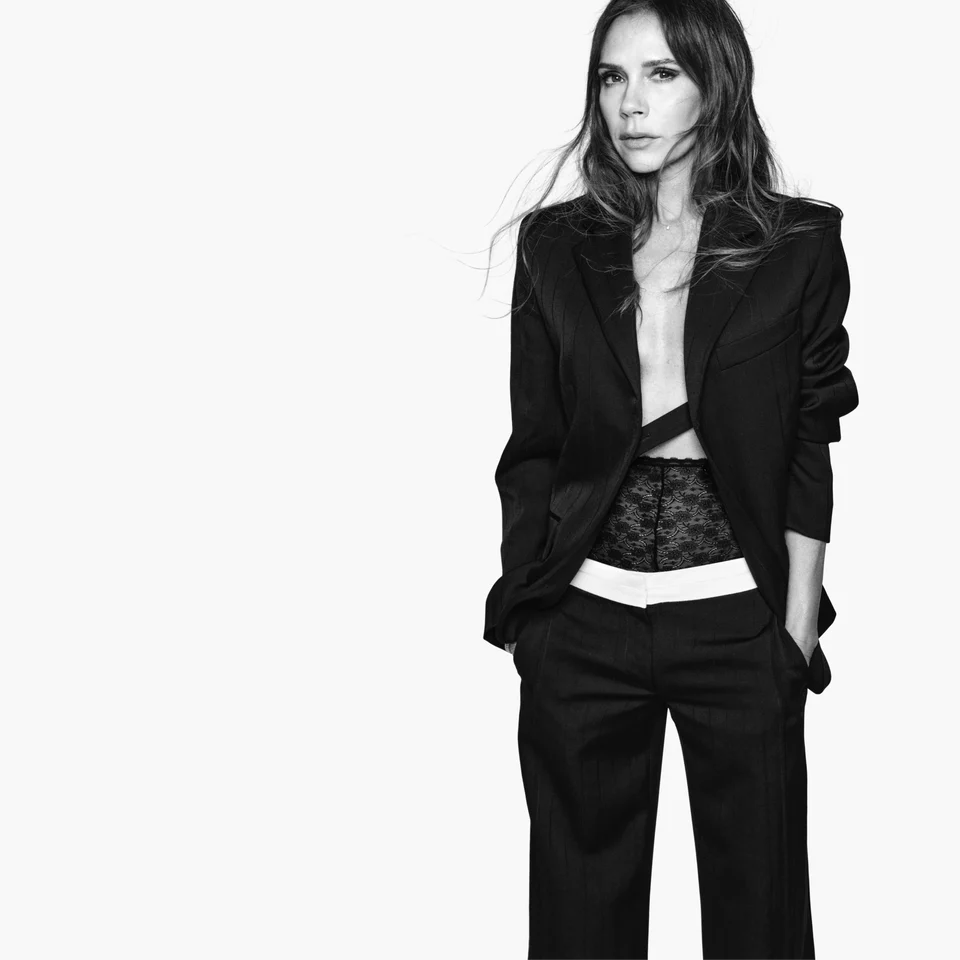

KYLIE JENNER
To understand the evolution of women's bodies, Kylie Jenner will be used as a case study. From her drastic body changes over the years, Jenner is a significant symbol of the idealistic body standard throughout the last decade. Therefore, Jenner's body transformations and the public scrutiny surrounding them can be analysed through the lens of gender theory, specifically in terms of the construction of femininity and beauty standards in society.
Being the youngest in the Kardashian-Jenner clan, Kylie is no stranger to body transformations, due to the influence of her older siblings and parental figures 10.
Over the years she has sparked various rumours of body commodification. From lip injections to Brazilian butt-lifts and now the use of the weight loss drug Ozempic. She has also faced rumours of nose jobs and other cosmetic enhancements. While Kylie has acknowledged some of these procedures, such as breast augmentation, she has often stated that these changes are due to other factors like puberty and weight gain. The discussion around Kylie Jenner's plastic surgeries sheds light on societal beauty standards and the pressures faced by celebrities to maintain a certain image 11.
Jenner's BBL quickly became a main topic of controversy, with many accusing her of promoting unrealistic body standards and sending a harmful message to her young fans. Some critics argued that her exaggerated proportions contributed to a culture of body dysmorphia and insecurity, particularly among impressionable teenagers. Jenner's actions can be seen as an attempt to keep up with the ever-changing standards placed upon women's bodies. So by being a prominent public figure, she continuously plays a role in shaping these beauty standards.
As of recently, there has been a massive circulation regarding whether Kylie Jenner has used Ozempic to lose weight over the past year. Ozempic is a prescription drug for diabetics to help maintain a healthy weight. In this case, celebrities are taking advantage of the drug and abusing it to an outrageous extent, like what Jenner has been accused of doing. The reason behind this assumption is that people have speculated that Kylie Jenner may have "reversed" her Brazilian Butt Lift (BBL) surgery, as her butt appeared noticeably smaller in a recent TikTok video where she tried on outfits in her walk-in closet. Fans noted her slimmer appearance compared to her previous curvier look, with some suggesting that she may have removed butt implants or fat. Commenters on the video also pointed out that Kylie's waist appeared smaller than before, leading to speculation about potential cosmetic procedures beyond the alleged BBL reversal.
Additionally, many fans remarked on Kylie's resemblance to her model sister Kendall Jenner, with some even saying they initially had trouble recognising her in the video. These observations have fuelled further discussion and rumours about Kylie Jenner's changing appearance and potential cosmetic enhancements. Observers on social media have expressed concern over Kylie's changing body type, questioning the factors behind her new look. Discussions surrounding Kylie's appearance, including her potential plastic surgery procedures and weight loss techniques, have generated buzz among fans and critics alike 12.
Furthermore, the trends and shifts in Kylie Jenner's body over time reflect broader societal attitudes towards feminine beauty and the pressure on women to continuously strive for an idealised aesthetic. The scrutiny and commentary on Kylie's changing body shape expose how women, particularly those in the public eye, are subjected to intense scrutiny and judgment based on their physical appearance. This scrutiny contributes to the perpetuation of harmful beauty standards and the objectification of women's bodies.
An important factor that plays a part in Kylie Jenner's transformations over the years is the idea of class. As we know she is from one of the most famous families in the world and has a net worth of over one billion. This means that she can afford lifestyle treatments and plastic surgery without a second thought. She is almost like a blank canvas, where she has the freedom to create any version of herself that she pleases. Constantly conforming to the beauty standards of the time.
Overall, the discourse around Kylie Jenner's body transformations underscores the complexities of gender, beauty, and societal expectations placed on women. By examining her experiences through the lens of gender theory, we can gain insight into how women navigate and negotiate societal norms and expectations related to their bodies, appearance, and self-worth.

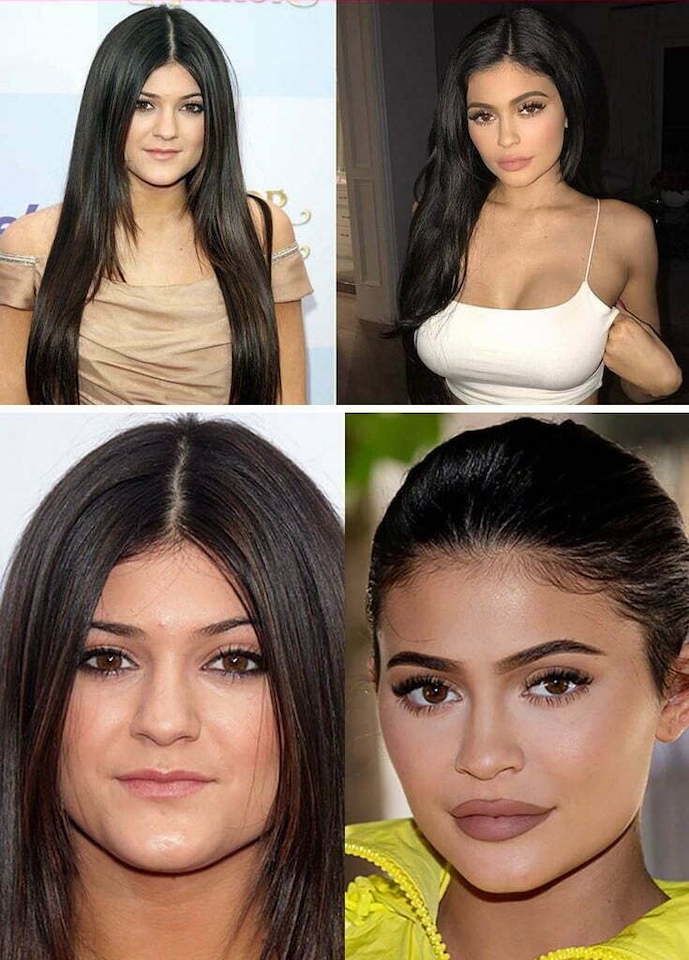
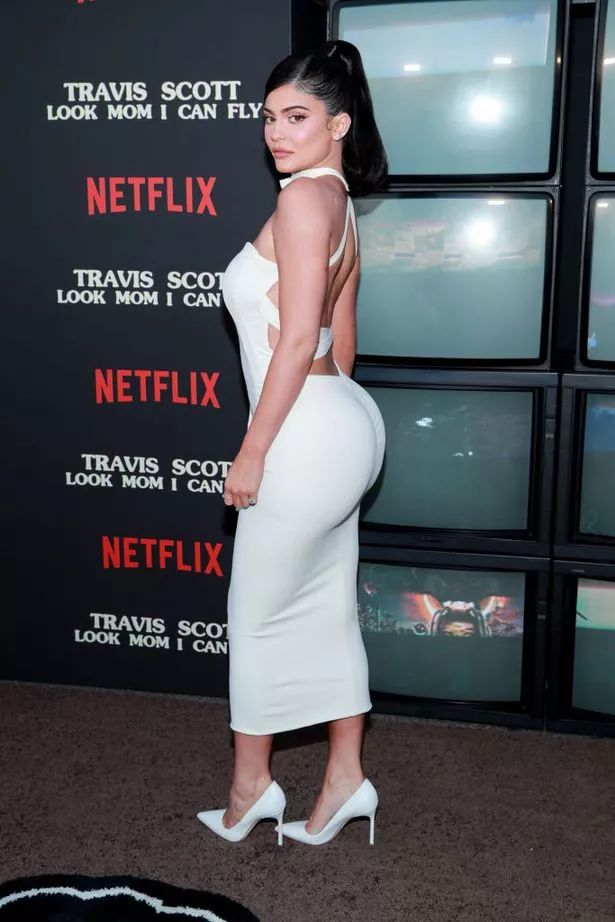

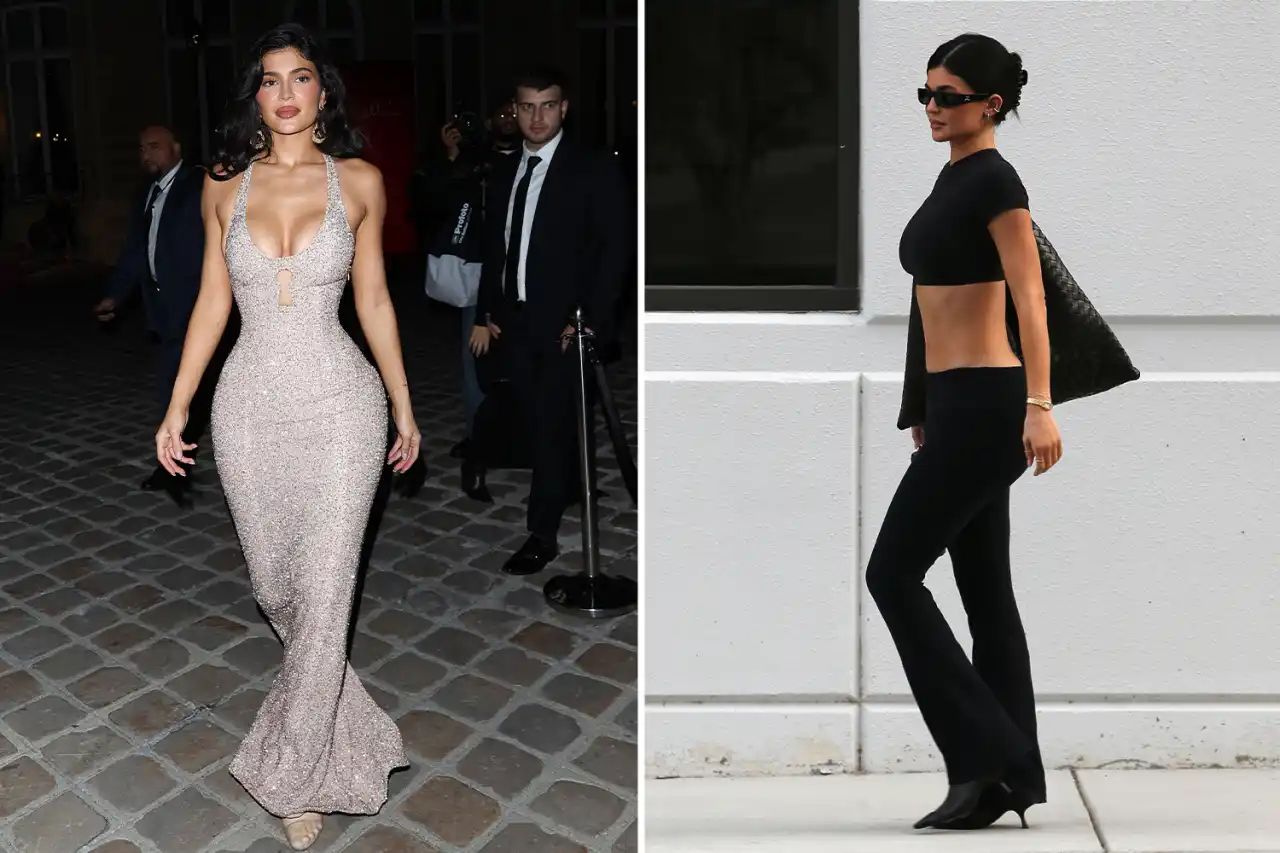

"Ozempic is ozemping"
This video of Kylie Jenner dancing on TikTok immediately went viral due to her basic dance moves and her dramatically thin figure. People were quick to judge her and comment on her body. some comments read "Ozempic is ozemping" and "BBL is out Ozempic is in" accusing her of using the weight loss drug, furthering the allegations and highlighting her dramatic and quick switch between her past body type. Other users were commenting on how she looked very different and how similar she looked to her sister, Kendall Jenner.

Media Representation
Media plays a large role in the body images and standards that are being presented to society. Many look to actresses and celebrities for the current desirable body image. Various forms of media including television shows, movies, advertisements, social media and more, show societal beauty standards that are reinforced for all to see. Further, influencing how women perceive their bodies.
One example that is notable in presenting beauty standards is the movie 'Mean Girls'. Released in June of 200413 the film follows four main girls and their life throughout high school. Each of the four main actresses, Lindsay Lohan, Rachel McAdams, Amanda Seyfried, and Lacey Chabert13, all have similar body types, all following the early 2000s beauty standard of slim, skinny figures.
A second example of women's bodies in media is Baywatch. The Baywatch franchise consists of two films, both of these films are quite well known for their representation of women 14. All the main women portrayed in the film are of similar body types, small waists with larger breasts which are notably highlighted throughout the film. There is a strong comparison to their male counterparts in the film as the male body types presented do have some variation.
While body representation in media has been very narrow, films and tv shows are evolving, showcasing more body types, making the industry more inclusive. One strong representation of this is the recent Barbie movie 15. The well-known and generational dolls were known to fit one particular body image. In recent years, Mattel has created more inclusive dolls and characters with varying body types, skin colours and representation.
While the media has been known to represent a very specific body image and type it is great that the industry is starting to expand to be more inclusive. With great examples of Barbie and other recent shows such as Sex Education having all body types represented throughout media has great impacts on society including the mental health of viewers.



Mental health impacts
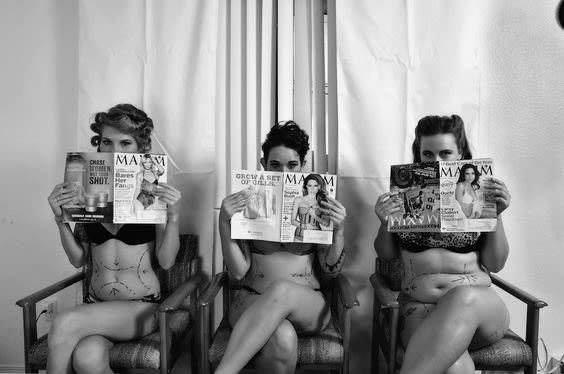
The constant evolution of shifting perceptiosn of beauty and body image has led to many people discussing the mental health impacts of very specific idealised body shapes and sizes.
Mental health conditions such as depression and anxiety have been known to be linked to unrealistic body images. With media being so large it becomes very easy for those to compare themselves to the specific and idealised body images. Depression and anxiety can stem from those feeling uncomfortable in their skin and feeling less when unable to live up to these standards.
Eating disorders and body dysmorphia are some more very serious health conditions that can stem from unrealistic beauty standards that are showcased throughout society and media. With many of the beauty standards highlighted in society today being very expensive or extremely hard to obtain, many develop these eating disorders to try and fit their bodies into these idealised and unrealistic body images.
The influence of these beauty ideals is furthered by the cosmetic procedures of BBLs Ozempic. These unnatural body enhancements influence the creation of new body standards that make others feel inadequate and unhappy about their body image.
Overall there are multiple impacts of having these body standards throughout society. The constantly changing nature of these images and the unrealistic ways they are achieved, cause many to question their bodies. This leads to women attempting to change their bodies to achieve these unrealistic standards leading to damaging their mental and physical health.
WHAT ABOUT MEN AND THEIR BODIES?
As we are focusing on woman's bodies, there lies the question 'How does the ever-changing Female body differentiate between the male body?'.
The male and female bodies have evolved differently due to societal norms, cultural expectations, and historical gender constructs. One key difference is the way in which masculinity and femininity have been historically defined and enforced.
The male body is traditionally associated with strength, power, and dominance16, while the female body is associated with beauty and delicacy. Media representation and class, race, and identity also shape these bodies differently. Women of color and transgender individuals face unique challenges and stereotypes related to their bodies, while others navigate societal expectations that may not align with their gender identity. Recognizing and challenging these differences can promote a more inclusive understanding of gender and bodies.
Class and race have also played a significant role in shaping the male body. Historically, certain body types and physical attributes have been idealised within different social classes and racial groups 17. For example, the muscular and athletic body has been traditionally associated with middle and upper-class white men, while stereotypes of black men as physically strong and hyper-masculine have persisted in popular culture.
Identity also plays a crucial role in shaping the male body. Individuals may choose to modify or transform their bodies to align with their gender identity and personal beliefs, whether through bodybuilding, cosmetic surgery, or gender-affirming procedures 18. This further highlights the diversity and fluidity of the male body across different intersections of identity.
Overall, while both male and female bodies have experienced changes and challenges over time, the way in which these changes manifest and are perceived can differ based on gender norms, societal expectations, and cultural constructs. Recognising and challenging these differences can help foster a more inclusive and equitable understanding of gender and bodies.

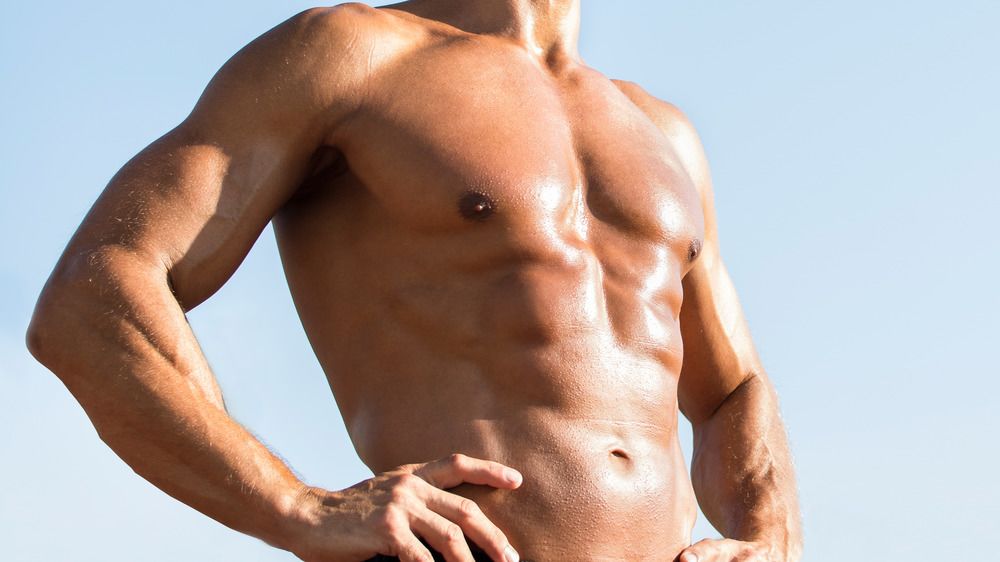

CONCLUSION
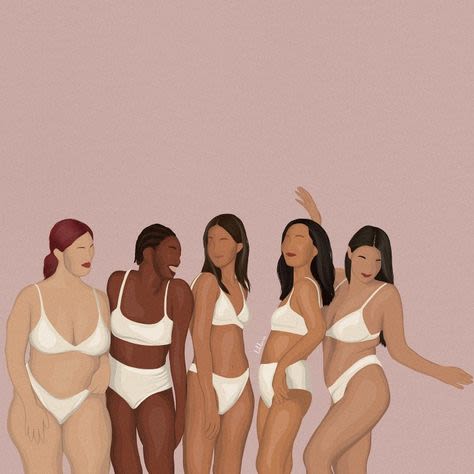
In today's society, the relationship between gender and women's bodies is a topic that is constantly evolving and being redefined. From the rise of body transformative surgeries such as Brazilian Butt Lifts (BBLs) to the emergence of transformative trends like Ozempic, there are numerous ways in which women are seeking to change their bodies to align with societal standards of beauty.
The ideal body has changed drastically over time, influenced by factors such as historical context, cultural norms, and media representation. From curvaceous figures in the Renaissance period to the thin, waif-like bodies of the 1990s, the standards of beauty that women are expected to adhere to are constantly in flux.
Gender theory plays a crucial role in understanding the evolution of women's bodies, as it examines how societal expectations and norms shape our perceptions of gender and body image. Class and society also play a significant role in shaping women's bodies, as access to resources and opportunities can greatly impact one's ability to conform to societal beauty ideals. Media representation further reinforces these norms, with airbrushed images and unrealistic portrayals of beauty creating unattainable standards that can have detrimental effects on women's self-esteem and mental health.
The mental health impacts of these societal pressures are significant, with many women experiencing body image issues, eating disorders, and low self-esteem as a result of feeling inadequate or insecure about their bodies. Additionally, the comparison between men and their bodies highlights the gender disparities that exist in how bodies are perceived and valued, with women often facing greater scrutiny and pressure to conform to narrow beauty standards.
The exploration of the relationship between gender and women's bodies is a multifaceted and complex issue that requires a nuanced understanding of the various factors at play. By examining body transformative surgery, evolving beauty ideals, gender theory, societal influences, media representation, mental health impacts, and gender disparities, we can begin to address the challenges that women face in navigating their relationships with their bodies. It is crucial to promote body positivity, self-acceptance, and inclusivity, and to challenge the narrow standards of beauty that continue to shape how women perceive and experience their bodies in today's society.
References
1 : https://adflegal.org/article/how-gender-theory-undermines-reality
2 : https://edition.cnn.com/2018/03/07/health/body-image-history-of-beauty-explainer-intl/index.html
3 : https://www.webmd.com/beauty/what-is-a-brazilian-butt-lift
4 : https://www.plasticsurgery.co.nz/procedures/brazilian-butt-lift
5 : https://cosmeticsurgeryclinicturkey.com/blogs/celebrities-with-bbl-before-and-after-photos/
6 : https://aucklandweightlosssurgery.co.nz/ozempic-for-weight-loss-richard-babor-on-balancing-the-promise-and-perils/#:~:text=There%20are%20Ozempic%20clinics%20popping,%2C%20it%20costs%20%24500%2Fmonth.
7 : https://edition.cnn.com/2018/03/07/health/body-image-history-of-beauty-explainer-intl/index.html
8 : https://www.wired.com/2001/09/spice-girl-admits-eating-disorder/
9 : https://people.com/nicki-minaj-regrets-some-plastic-surgery-after-looking-back-old-photos-8400431 9
10 : https://www.the-sun.com/entertainment/9426759/inside-kylie-jenners-body-transformation-boobs-and-butt-disappear/
11 : https://mayclinik.com/blog/kylie-jenner-before-and-after-plastic-surgery/
12 : https://www.themirror.com/entertainment/celebrity-news/fans-claim-kylie-jenner-reversed-396179
13 : https://en.wikipedia.org/wiki/Mean_Girls
14 : https://en.wikipedia.org/wiki/Baywatch_(film)
15 : https://www.imdb.com/title/tt1517268/
16 : https://bonytobeastly.com/most-attractive-male-body-survey-results/
17 : https://www.mensjournal.com/health-fitness/heres-what-ideal-male-body-looks-19-countries-around-world
18 : https://www.healthdigest.com/279551/the-perfect-male-body-has-changed-a-lot-in-the-last-decade/
Image references
Title photo : https://greatist.com/grow/100-years-womens-body-image
Introduction photo : https://www.blueheart.io/post/body-image
Queens Victoria 1 : https://www.britannica.com/biography/Victoria-queen-of-United-Kingdom
Marylin Monroe : https://en.wikipedia.org/wiki/White_dress_of_Marilyn_Monroe
Kate Moss : https://alextolhurst.medium.com/the-toxic-body-image-of-the-2000s-165c928b50c3
Kim Kardashian : https://www.the-sun.com/entertainment/1931025/kim-kardashian-thong-bikini-tahoe-cabin/
Alix Earle : https://pagesix.com/2023/10/06/tiktok-star-alix-earle-breaks-down-in-tears-over-toxic-eating-disorder-battle/
BBL : https://www.dailymail.co.uk/health/article-13337447/celebrity-brazilian-butt-lifts-hollywood.html
Mean Girls : https://nypost.com/2020/01/23/tina-fey-is-turning-mean-girls-broadway-musical-back-into-movie/
Baywatch : https://ew.com/article/2016/04/01/new-baywatch-photo-alexandra-daddario-kelly-rohrbach-ilfenesh-hadera/
Barbie : https://www.parents.com/barbies-feminism-doesnt-go-far-enough-7567124
Victoria Beckham : https://victoriabeckhambeauty.com/en-nz/pages/about
Nicki Minaj: https://www.mirror.co.uk/3am/celebrity-news/nicki-minaj-gets-puppies-out-4469778
youtube video: https://youtu.be/Xrp0zJZu0a4
BBL image : https://www.dailymail.co.uk/health/article-13337447/celebrity-brazilian-butt-lifts-hollywood.html
Ozempic image: https://www.novomedlink.com/diabetes/products/treatments/ozempic/dosing-administration/dosing-and-prescribing.html
Kylie Jenner: https://www.the-sun.com/entertainment/9426759/inside-kylie-jenners-body-transformation-boobs-and-butt-disappear/ https://mayclinik.com/blog/kylie-jenner-before-and-after-plastic-surgery/ https://www.themirror.com/entertainment/celebrity-news/fans-claim-kylie-jenner-reversed-396179
Queen Victoria 2 : https://www.history.com/topics/european-history/queen-victoria
Gender Theory 1 : https://www.wsj.com/articles/trans-gender-transition-confusion-pediatrics-academy-girl-wrong-body-desist-11661809307
Gender theory 2 : https://edition.cnn.com/2018/03/07/health/body-image-history-of-beauty-explainer-intl/index.html
Male body types 3 :https://www.mensjournal.com/health-fitness/heres-what-ideal-male-body-looks-19-countries-around-world
Male body types 2 : https://bonytobeastly.com/most-attractive-male-body-survey-results/